
홈
Gaya Tumuli
Daeseong-dong Tumuli
Daeseong-dong Tumuli
Daeseong-dong Tumuli
- The highest-status cemetery of Geumgwangaya
- The Daeseong-dong Tumuli exemplifies an early form of the funerary practices shared within the Gaya Confederacy.
General Information
- Designation: Historic Site No.341
- Construction period: 1st-5th centuries
- Property area: 3.06ha
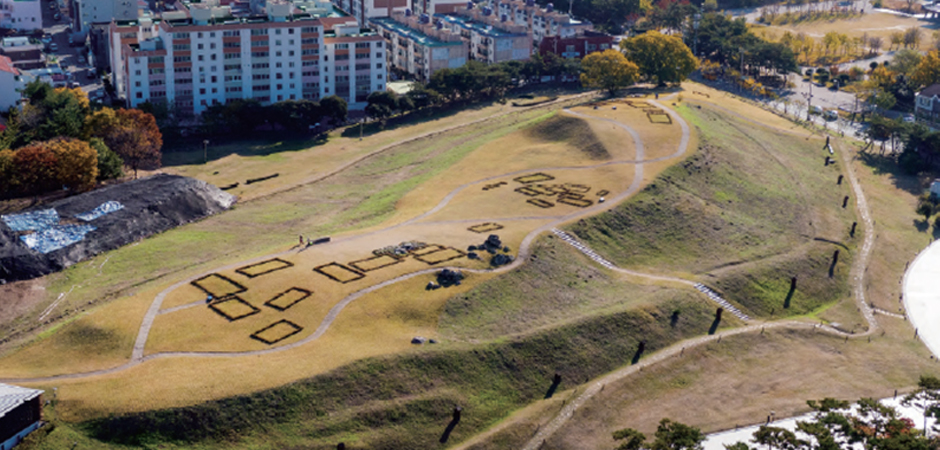
- overview
- The Daeseong-dong Tumuli is named after the neighborhood in which it is located: Daeseong-dong in Gimhae, Gyeongsangnam-do Province. Tombs at the Daeseong-dong cemetery, which house the bodies of members of the ruling class of Geumgwangaya, are dated to the first through fifth centuries. The Daeseong-dong Tumuli illustrates an early form of the funerary practices characteristic of Gaya civilization.
The Daeseong-dong Tumuli took form over the first through fifth centuries in a hilly area in the Gimhae Basin. During this period, the area south of the Daeseong-dong cemetery was part of Gimhae Bay. The sea gradually receded from the area, and several waves of land reclamation in the 20th century allowed urban development in the 1970s. It was not until 1990 that the existence of the Daeseong-dong Tumuli came to light. The cemetery was discovered while preparing land for urban development. Following its discovery in 1990, subsequent excavations at the Daeseong-dong Tumuli brought to light its historical importance. The cemetery was designated a Historic Site in 1991 and its surrounding areas were developed as a public park.
Drawing on trade through Gimhae Bay, Geumgwangaya became the strongest power in the Gaya Confederacy during the early Gaya period (first–fourth centuries). Members of its ruling class, including the very most powerful, were buried at the Daeseong-dong Tumuli. Wooden coffin burials, wooden chamber burials, and then stone-lined chamber burials were consecutively constructed at the cemetery over the first through fifth centuries. Wooden coffin burials first took place in flat areas around the hilly section starting in the first century. From the second half of the second century, wooden chamber burials started to be built in the upper sections of the hilly area. From the late third to early fifth centuries, large wooden chambers were built on the summit of the hill, and smaller ones were installed on the slopes. Tomb construction at the Daeseong-dong Tumuli came to an end in the second half of the fifth century after the construction of a stone-lined chamber at the southern foot of the hilly area. This corresponds with historical records recounting that Geumgwangaya fell to Silla in 532 and the area governed by Geumgwangaya was placed under its control. From that point onward, no further tomb construction took place until the present.
The pottery excavated from the stone-lined chamber burials and large wooden chamber burials at the Daeseong-dong cemetery include the three kinds of Gaya pottery found in all the nominated cemeteries: footed bowls, jar pedestals, and long-necked jars.
The Daeseong-dong cemetery has yielded bronze mirrors and dragon-decorated belts from China, bronze caldrons from peoples living in what is today Manchuria, and bronze ceremonial objects from Japan, indicating that Geumgwangaya played a central role in international trade in ancient East Asia involving both China and Japan.
Picture

Picture1. View of Gimhae Daeseong-dong Tumuli
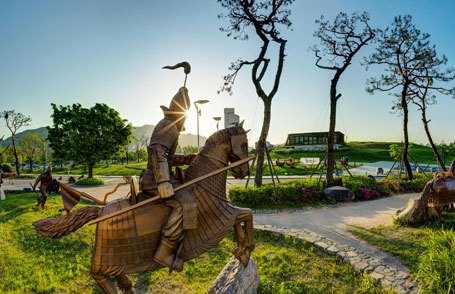
Picture2. Picture of Gimhae Daeseong-dong Tumuli
Relics
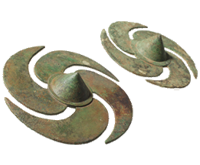
Tomb no. 13 Pinwheel-shaped Bronze Tool
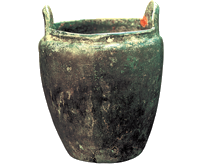
Tomb no. 29 Bronze Pot

Tomb no. 70 Stove-shaped saucer
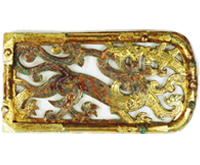
Tomb no. 88 Gilt Bronze Belt Trimmings
